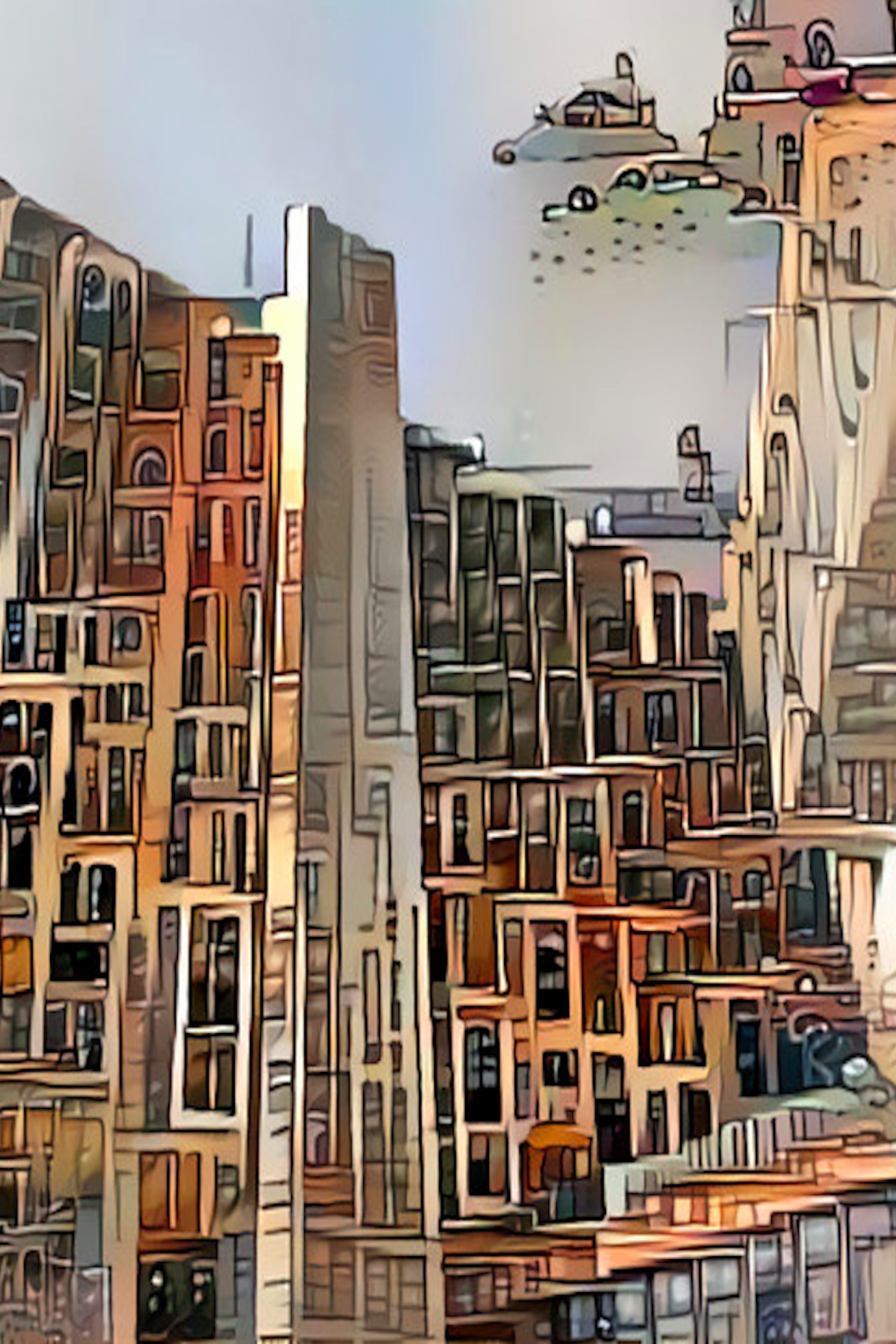Reading Faces- Reading Minds: Intersections between Art and AI
April 2019 – April 2020
Faculty of Information
Bissell Building
Victoria Delisle, Andrew Falcao, Natalie Hajduk and Katlyn Wooder
The exhibit, Reading Faces- Reading Minds: Intersections between Art and AI, explores the space between Artificial Intelligence and Art. It is a reflective space that inspires probing questions into how AI is being integrated into our everyday lives. It encourages people to think critically about authorship, and their interactions. The exhibit aims to engage people in the building by showcasing artwork, as well as research being done at the Faculty of Information, in a bold and bright environment of creative inspiration.
The primary audience is academic. The building is populated by an audience of professors and students from a broad range of disciplines. So, it aims to be inclusive by engaging audiences who may know very little about the subject, and detailed enough for those who are subject experts. An underlying assumption is present that the people who are engaging with the exhibit are students, professors, administrators, and others who work in the building.
The exhibit is located in the Bissell building, on floors 2, 3, 4, 6, and 7. The exhibit design presents a continuous narrative detailing the interconnected topics of artificial intelligence and art, while grouping content into themes on each floor. Incorporating thematic floors lends itself well to the architecture of the building, which naturally breaks the exhibition’s narrative.
Jackman Humanities Institute was the major sponsor of the exhibit, partnering with the ISchool to feature a major speaker event alongside the exhibition’s opening. The 2018/2019 Exhibition Class provided additional funds for the project, and we also received grants from the Student Intuitive Fund and the McLuhan Centre for Culture and Technology.
Planning Reading Faces- Reading Minds: Intersections between Art and AI started in October of 2018, and continued until its opening date on April 22, 2019. The exhibit design was started in January 2019, following the closing of our Call for Artist Submissions, with final exhibit design finished in March. The planning and content development took seven months, while installation and printing took one month. The deinstallation and return of the 2018/2019 artwork to their owners. The exhibit will open on April 22, 2019 and close in April 2020, a specific date to be determined by the next exhibit group.
Reading Faces- Reading Minds: Intersections between Art and AI consisted of 2D pieces of art, accompanied by panels that shared artists’ biographies, artists’ quotes, and artwork descriptions. Artworks that were not created by a human artist, included descriptions regarding the creative process. Certain pieces of artwork used open-source AI technology to create objects for the exhibit. The interpretive elements were found in panels: Introductory, Theme, Artist, and Research. Exhibition brochures were created as promotional material about the exhibition, and were distributed in the Bissell building, the Jackman Humanities Institute, and the McLuhan Centre for Culture and Technology.
The exhibit included a series of workshops held in March 2019, which brought together the ISchool community. A community created artwork resulted from the programming, inspired by the UK-based collaborative art-science project, Neural Knitworks. (For more information, please visit https://www.scienceweek.net.au/neural-knitworks/.). The pieces featured in the 4th floor glass display case, including a panel detailing two different textile creations. During our opening event, Lucy Suchman (professor, researcher and author) will be the keynote speaker on the theme of Reading Faces, Reading Minds in an era of artificial intelligence. The talk will be followed by a cocktail reception from 7:30-9 PM at the Bissell Building, 140 St. George Street, Room 728.
The exhibit is designed to attract attention from the faculty and students in the building, as well as from passing visitors. It is intended to create an accessible introduction to the topic of artificial intelligence, and to create an aesthetic appeal to the building while exploring the Jackman Humanities Institute theme of Reading Faces, Reading Minds. As AI is a new terrain that artists are exploring, this introduced some challenges in selecting work about the subject. The exhibition team sourced multiple artworks from different sources, including online communities, to create a more diverse representation of how artificial intelligence is emerging in our culture.
We would like to thank the Jackman Humanities Institute, the McLuhan Centre for Culture, and Technology, the Exhibition Class, and the Student Initiative Fund, who sponsored our exhibit, the artists who contributed their artwork to the exhibition, the Inforum’s librarians who supported our programming initiatives, and the faculty who offered their time, subject expertise, and resources to our project. We would also like to thank Professor Matthew Brower, and Teaching Assistants Rebecca Noone and Camille-Mary Sharp for their support in making this exhibit possible.
Science exhibit
academic research, AI, algorithms, art, art gallery, artificial intelligence, artists, authorship, bold art, community art, Faculty of Information, Jackman Humanities Institute, McLuhan Centre for Culture and Technology, technology, Toronto


